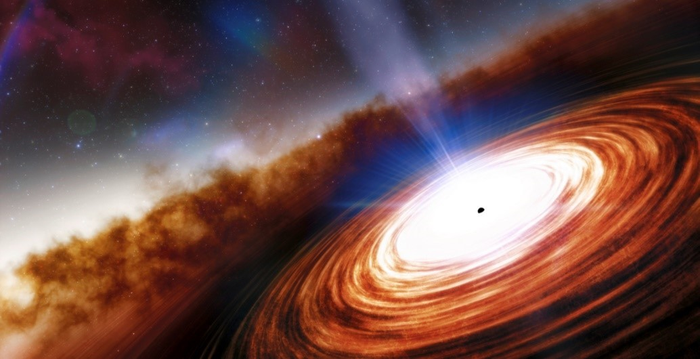A new method to quantify the physical properties of galactic ionized gas was created by Dr. Zhicheng He and his colleagues from the University of Science and Technology of China (USTC) of the Chinese Academy of Sciences.

Image Credit: University of Science and Technology of China
The researchers found the acceleration of quasar outflows, for the first time, at the scale of tens of parsecs. The study was published in the journal Science Advances.
As per the new-age theories on the formation and evolution of galaxies, the mechanism of Active Galactic Nuclei (AGN) feedback proposes that the huge black hole at the center of a galaxy controls its evolution by passing ionized gas, called quasar outflow, stopping a possible oversized black hole growth. The outflow—transporting energy and matter to host galaxies—acts as one of the primary ways of AGN feedback.
Nevertheless, there was less knowledge about the outflow of active galaxies. For the main factor, the scale of outflows was predominantly inferred from spectroscopic blueshifted adsorption lines (also known as BAL). Due to the substantial reliance on models, the achieved results were not dependable enough.
Dr. He designed a novel technique based on his earlier studies. He suggested that BAL variation can be a significant tool in probing outflows. In this study, he approached this technique by taking into account both the amplitude and the function’s phase, which explains the ionized gas response under radiation. They acquired the kinetic information about quasar outflows and found the acceleration for the first time at a scale of tens of parsecs, which outdid that forecasted by the conventional accretion disk wind model.
As proposed by Dr. He and other co-scholars, interstellar dust can be an important reason for the acceleration, because the cross-section between dust and accretion disk ultraviolet radiation is well above that of Thomson scattering of free electrons. Researchers’ calculations confirmed this theory, and the assumed scale of outflow origin coordinated that of the dust ring, undoubtedly backing their hypothesis.
The results showed that dust did serve the main role in the association between accretion disk radiation and interstellar media. Also, the noteworthy outflows’ effect on host galaxies was confirmed as well. In addition, the results were consistent with the proof of outflows’ suppression on star formations, which was found recently by Dr. He and his collaborators.
Journal Reference:
He, Z., et al. (2022) Evidence for quasar fast outflows being accelerated at the scale of tens of parsecs. Science Advances. doi.org/10.1126/sciadv.abk3291